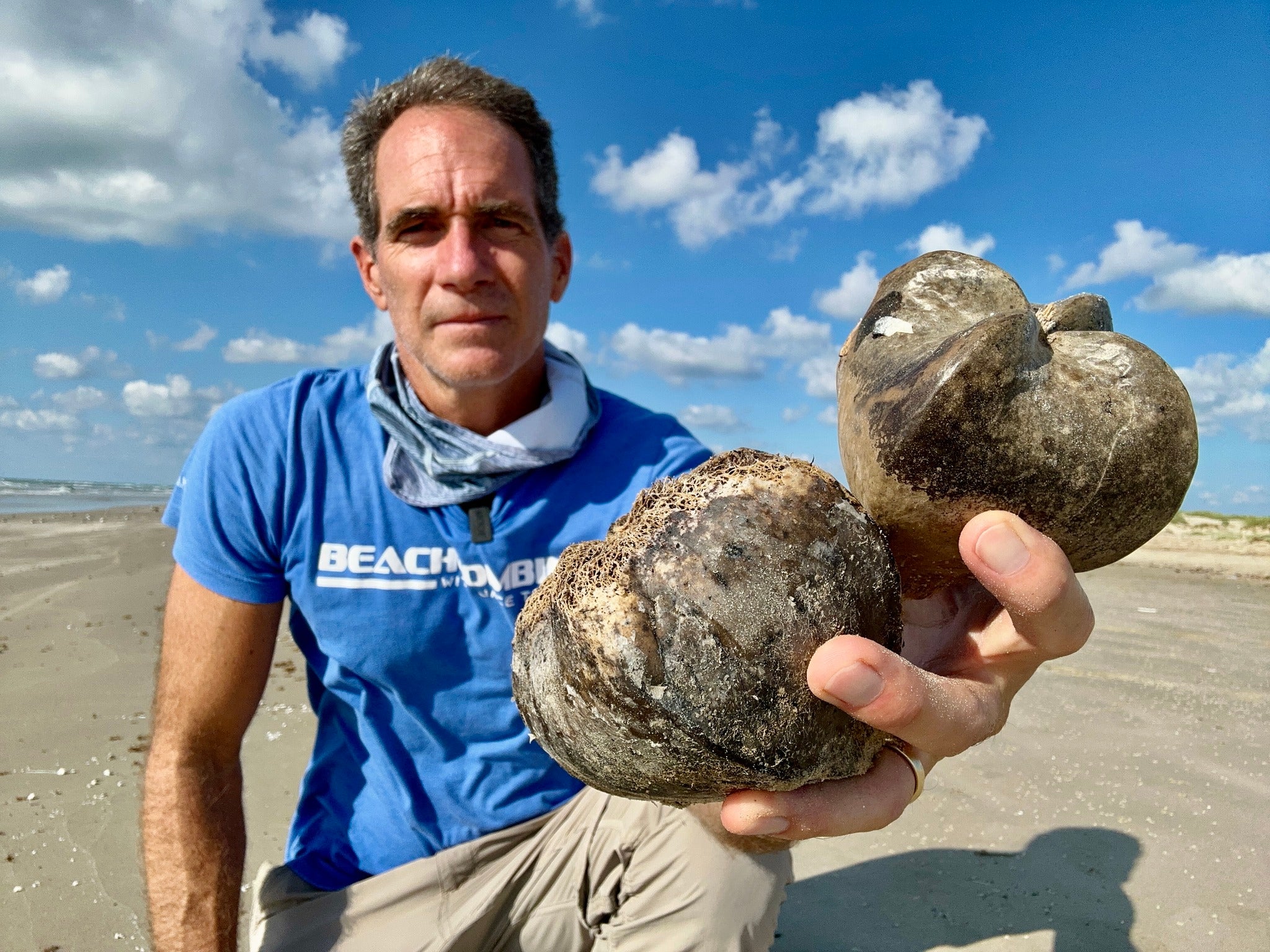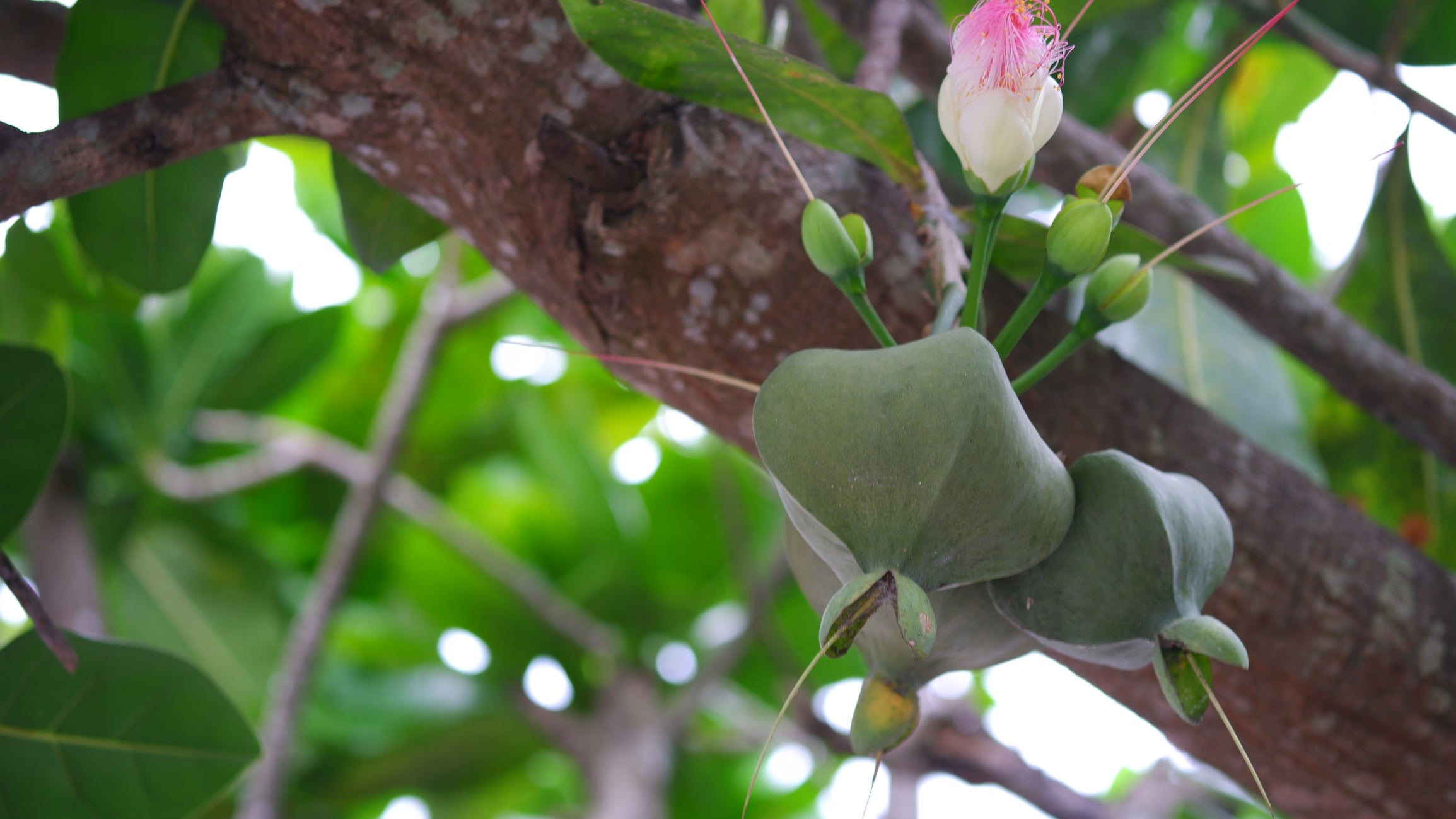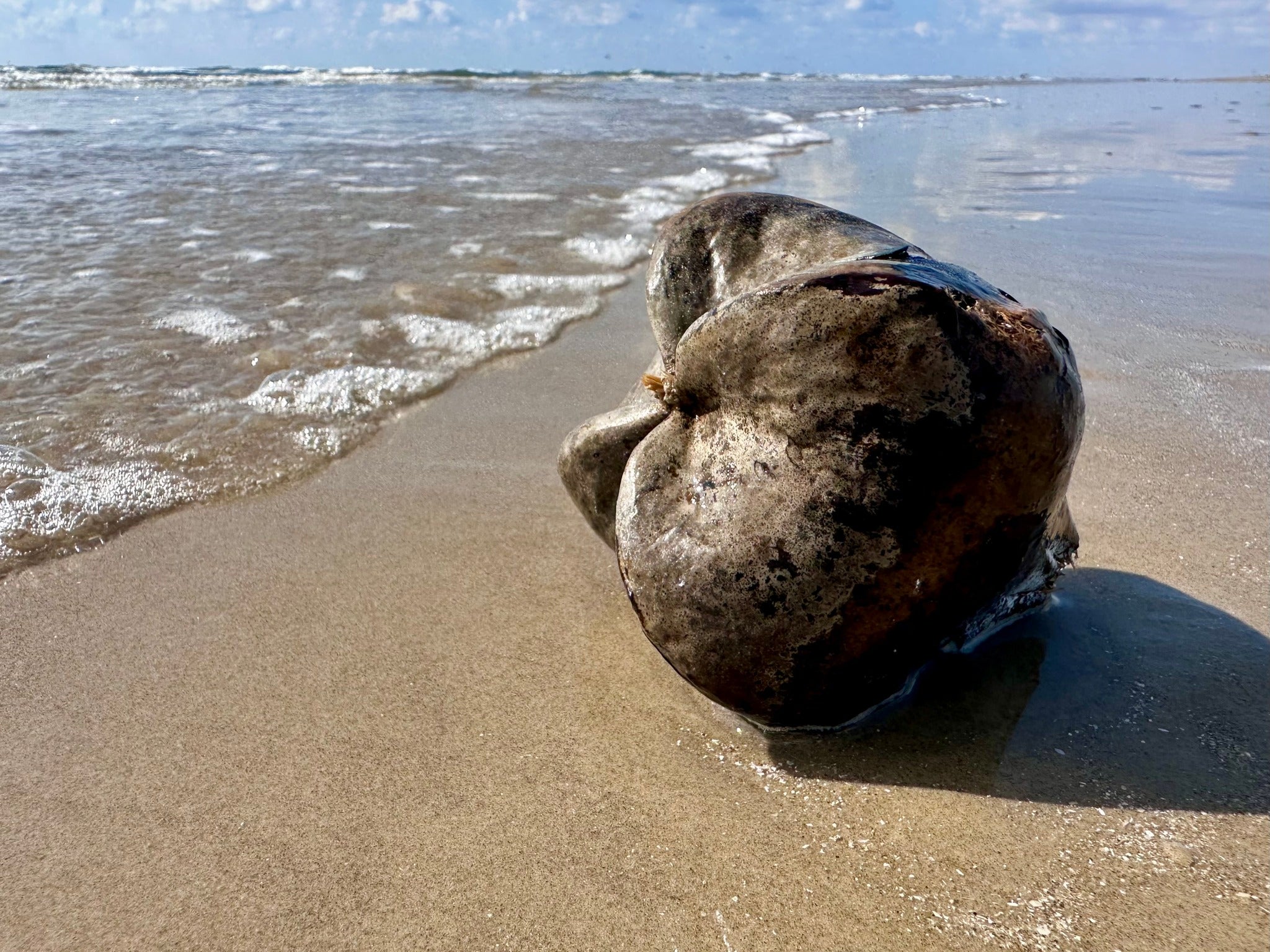Strange fruits that may have sailed ocean currents for years are washing up along Texas shores this week.
The softball-sized, cube-like and spongy lime green or brown objects known as “box fruit” can travel thousands of miles at sea before washing ashore.
“What makes them so special is where they come from,” Jace Tunnell, director of community engagement at the Texas A&M University-Corpus Christi Harte Research Institute for Gulf of Mexico Studies, wrote in a post shared on Facebook.
“These fruits grow on the Barringtonia asiatica tree, originally found in the Indo-Pacific, but have been planted on Caribbean Islands, which is likely where these seeds drifted from,” he said.
But, beachgoers should beware! Box fruits are poisonous and eating the toxic plant chemicals in them can lead to a coma or organ damage, Indian researchers say.

In the past, fishermen utilized their toxic properties to catch fish.
“Some island cultures traditionally crushed them up and used them to stun fish in shallow water, which is why the tree is sometimes called the ‘fish poison tree,’” Tunnel explained.
The Barringtonia asiatica tree have stunning white flowers that produce the box fruits. The flowers only bloom at night, and attract bats and moths for pollination.


Once the fruits drop from the trees, they have also been used as natural flotation devices for nets, according to The Houston Chronicle. The fruits have pockets of air inside them allowing them to float along the water.
In traditional medicine, the seeds had been used to get rid of intestinal worms, Hawaii’s National Tropical Botanical Garden notes. They are not used that way anymore.
How many there are and where they have traveled remains unclear, but “enough trees are present in the Caribbean region to provide drift specimens reported from Yucatán, Texas and Florida,” author Ed Perry wrote in his book Sea-beans from the Tropics.
However, box fruits aren’t the only thing Texans need to watch out for when taking a beach day.
In 2022, venomous blue dragon sea slugs blew in from the Gulf of Mexico and have a sting that is even more venomous than the Portuguese Man O' War jellyfish.
Red sea urchins are also found in the region, and can pack a nasty and - while not fatal - dangerous sting.

.jpeg)





















.jpeg)












 English (US) ·
English (US) ·